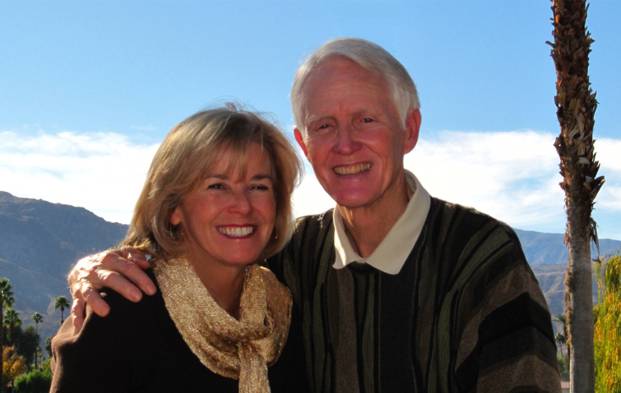
The Runaway Emotions Cycle
Appendix C: From the book, You Can Choose To Be Happy
Tom G. Stevens PhDPsychologist/Professor Emeritus, California State University, Long Beach
Send Feedback/Questions to: Tom.Stevens@csulb.edu
You Can Choose To Be Happy:
Site dedicated to enhancing human happiness, self-development, and success
Go to: Choose To Be Happy Checklist
SITE MAP: All free Self-help resources includes online book, You Can Choose To Be Happy, and SHAQ

|
|||
| search engine by freefind |
Appendix C: from You Can Choose
To Be Happy, Tom G. Stevens PhD
Go to book Contents
Go to Dr. Stevens' Home Page
The Runaway Emotions Cycle:
Overcoming Panic Attacks and Other Runaway Emotions
Contents:
The negative emotion-thought feedback loop is a cause of panic attacks
Recognizing that you have a choice
Dysfunctional beliefs about emotions help cause runaway emotions
Sometimes emotions seem to get out of control and become very frightening--simply because they seem out of control. As a result we may fear something disastrous--such as going insane, dying, or being depressed forever. These cycles of deep depression, temper tantrums, or panic attacks have one thing in common--the negative emotion increases negative thoughts--which, in turn, increase negative feelings. Each cycle increases both negative feelings and negative thoughts--until something final ends it. If nothing else intercedes, the body will intervene--sheer exhaustion will begin to help reduce the extremely high (or low) emotional state.
The negative emotion-thought feedback loop is a cause of panic attacks. One of the biggest causes of panic attacks is a feedback loop that works as follows:
1-Original anxiety cause. A person starts feeling upset about one situation. Example, Diane feels anxiety about rejection meeting someone.
2-Anxiety stimulates secondary reaction. When Diane notices herself feeling anxious, she notices that her heart rate is increasing and her breathing is getting tighter. This observation triggers a secondary thought that she might get so anxious that she can't breath and might faint.
3-Feedback increases anxiety level. The thought that she might lose control and faint increases her anxiety another step.
4-Feedback loop continues until something terminates it. This escalation between thoughts about losing control and anxiety increase until something terminates it. Diane could suddenly decide to leave the situation. That would decrease her anxiety and her thoughts about losing control.
One major cause of panic attacks is the underlying fear of the outcome --such as going crazy, fainting, or having a heart attack. Becoming aware of what those underlying fears are and learning ways of coping with them is a major way to control panic attacks (see chapters 4 and 8) People don't die or go crazy form panic attacks--those are serious misconceptions!
Another major cause is the feedback cycle itself. Noticing the increases in the negative emotion itself triggers the thoughts such as, "I'm losing control." Those secondary thoughts in turn increase the negative emotion. To break this cycle it is necessary to quit focusing on the increases in anxiety and focus on more constructive thoughts and ways of solving the immediate problem--such as Diane's talking to the stranger and overcoming her fears of rejection. It is important to remember that the "out-of-control" thoughts and beliefs about emotions magnifying the emotions. They are like pouring gasoline on a fire. Remember, these are just thoughts--not the truth! Continuing to focus on them only strengthens them.
When people get in deep depressions or get suicidal thoughts, they are often going though a similar process. Except, instead of anxiety, they primarily feel depression. There is a similar fear that the emotion will go on forever or get even worse until they can't stand it. Questioning the "I can't stand it" self-statement is important. The truth is that even if they do nothing, the depression will partially lift on its own--especially if they just accept that it is ok to feel awful and be depressed for a while. Positive problem-solving, thinking, and actions can help even more.
Recognizing that you have a choice of whether to get more control of my emotion can help. Say to yourself, "No matter what this is doing to anyone else, this unpleasant feeling is very unpleasant to me, and I am getting sick and tired of feeling this way. I chose to accept that it is ok to feel this way--I am not going crazy, am not a lunatic, am not out of control. These are just thoughts--not reality. It is ok to feel that way, but I would prefer to feel better. I choose to think about immediate ways to feel better or get help in feeling better." Return to beginning
Dysfunctional beliefs about emotions help cause runaway emotions
Beliefs that negative emotions are bad, destructive, or foretell some terrible consequences are often a root cause of runaway emotions. Beliefs that emotions are bad are dysfunctional beliefs. They can set off a vicious runaway emotions cycle (see appendix C). We need to identify and cleanse ourselves of all beliefs such as the following:
"It is wrong to ever feel angry." Instead try, "Anger tells me that I don't seem to be getting what I want, and I need to understand and accept the situation (or other person) better."
"If I feel guilty, I must be guilty." Instead try, "If I feel guilty, I will examine my underlying beliefs are expectations. Do I want to change my behavior or my expectations? Do I need to make restitution?"
"Feeling depressed (or anxious) means that my feelings (or life) are out of control." Instead, try "I may feel out of control or fear that my life is out of control, but that emotion does not mean that it really is out of control. I can get eventually get control and be happier!"
"Feeling fear is a sign of weakness." Instead try, "Fear is not a sign of weakness. If I feel fear, I will try to examine why I am afraid and what I can do about it."
PRACTICE: Identify dysfunctional beliefs that you have about emotions. Look at the above examples and take each emotion--anger, depression, and anxiety. Identify any negative associations (thoughts) that you have with any of these emotions. Do you see them as signs of weakness, badness, incompetence, future negative outcomes, or anything else negative? If so, find more constructive beliefs and points of view to overcome these negative ones. Then use them whenever you get the negative emotions. Return to beginning
ALSO SEE:
- "Rise Above" Anxiety, Anger, and Depression chapter from Dr. Stevens' book, You Can Choose To Be Happy. (CLICK HERE)
- The ANXIETY REDUCTION WEB PAGE
Dr Tom G Stevens' BOOK: You Can Choose To Be Happy:
"Rise Above" Anxiety, Anger, and Depression
(with Research Results)
Go to Free BOOK DOWNLOAD
pdf
Go to BOOK CONTENTS
Go to RESEARCH SUMMARY CHAPTER
SELF-HELP INFORMATION + SITE MAP:
FREE SELF-HELP MATERIALS on this web site (click here to see list)
Free SHAQ QUESTIONNAIRE: Go to:
Success and Happiness Attributes Questionnaire (SHAQ)
to assess yourself on many factors--including your
HQ-Happiness Quotient
ORDERING the BOOK:
How to ORDER You Can Choose To Be Happy
Web site created and maintained by: Tom G. Stevens PhD,
Psychologist/Professor Emeritus, California State University, Long
Beach Counseling and Psychological Services
URL of this web site:
http://home.csulb.edu/~tstevens/index.html
HOME PAGE: Return to Dr Tom Stevens' Home Page Copyright 2025; Tom G. Stevens PhD